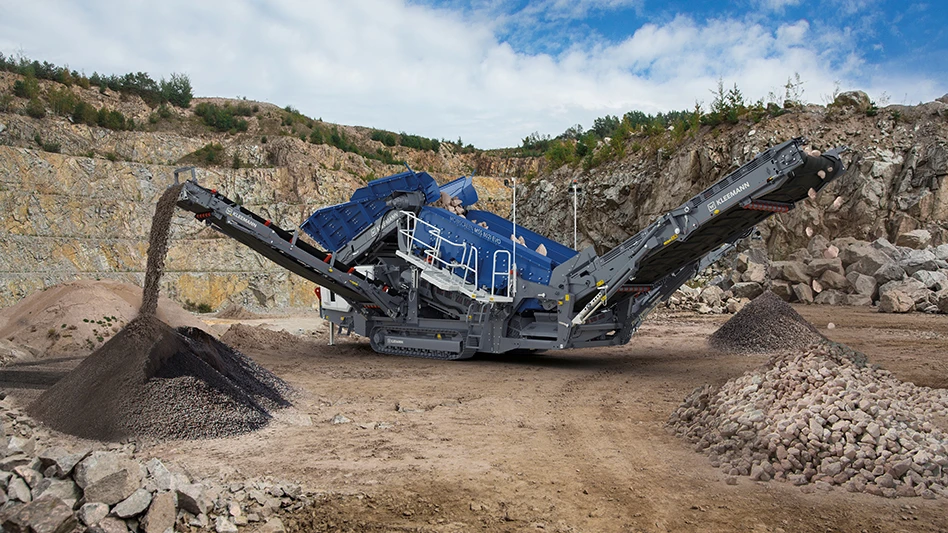
Photo courtesy of Wirtgen Group
Crushing and screening equipment maker Kleemann, part of the Germany-based Wirtgen Group, says its new Mobiscreen MSS 802(i) Evo offers users a mobile, efficient screening plant “designed to meet challenges in different application areas.”
The new model, a successor to the MS 15 Z product line, features technology designed to be easy and safe for users. “The new plant impresses not only with technological highlights in the process sequence, but also through its ergonomic design, optimized operation and the user-friendly maintenance concept,” the equipment maker says.
The Mobiscreen MSS 802(i) Evo has proportionally controlled running gear, and Kleemann indicates the plant can be quickly relocated either by on a flatbed trailer to the job site and can be moved around a work site. The new model has a feed capacity of up to 500 tons per hours in both recycling and natural stone applications, according to Kleemann.
“Apart from other improvements of the new MSS 802(i) Evo, folding of the side discharge conveyors without the need for disassembly clearly reduces set-up times,” the company says.
Increased application versatility is assisted by a hopper rear wall that can be folded to three heights, which permits feeding of crushing plants with a lower discharge height, according to Kleemann.
“The large offer of screen surfaces and simple adjustment of the screen parameters, which makes rapid adaptation of the MSS 802(i) Evo to a very wide range of feed materials possible, reduces set-up times and thus personnel requirements and costs,” the company says.
Also included in the new model is a wide crusher discharge conveyor for which the speed can be quickly adjusted. A large material transfer system to the screen deck provides optimum utilization of the screening surfaces, while high discharge heights lead to higher stockpiles.
Latest from Construction & Demolition Recycling
- Sky Quarry seeks crowdfunding support
- Caterpillar releases the new Cat 980 GC Wheel Loader
- NAPA leaders participate in USDOT roundtable
- Yanmar CE launches full line of compact equipment
- Metso reports increased orders after flat H1
- Block Island Recycling Management Inc. aims to promote environmental stewardship
- SDI’s earnings rise quarter on quarter
- Complaints prompt relocation of concrete recycling plant





